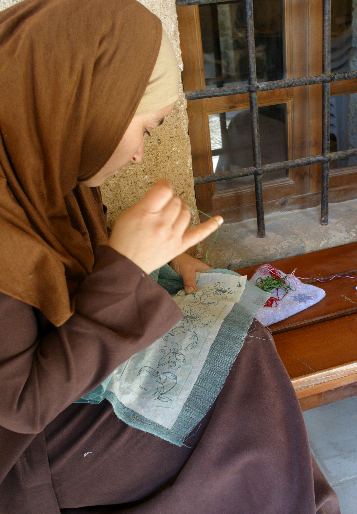Clothing industry is linked to the tailoring and embroidery crafts, which were traditionally famous in Lebanon, and regressed later due to the spread of the factory tailored clothes. Currently this craft evolved to conform to modern fashion, and its popularity surpassed local markets.
It is of two types:
- Haute couture with worldwide famous designers like Elie Saab, Zuhair Murad and many others adopting modern designs while respecting the cloth types and embroidery styles
- Artisanal clothes (cloak, caftan, sirwal and shawl), with traditional designs that comply with the needs of society and culture as cloth is a social communication mean par excellence
This craft is linked to local heritage and inherited technologies, from the type of fabric (velvet, silk, linen, muslin, lace) to the embroidery, trimmings and crochet made by housewives and associations concerned with the empowerment of women.
This craft has evolved to keep pace with the modern fashion, design trends and marketing strategies (display in galleries, Internet shopping, fashion shows). Sales surpassed the Lebanese market and reached Arab and international markets.
The folk costumes handicraft has been active since the sixties of the twentieth century with the establishment of the Lebanese artisanal shops supported by the Ministry of Social Affairs. The designed costumes are inspired from the local heritage in a chic and elegant way which re-attracted the rich consumers.
Work in this sector has changed. A piece is no longer designed and produced on demand by the craftsman alone (the traditional way), today there is a designer, a manufacturer, and a seller. This change introduced new craftsmen, not belonging to families who worked traditionally in this industry, into the field of folk costumes making. Young generation of innovators and fashion lovers were encouraged to learn this craft like Mrs. Soraya Baba, who started designing and making in her forties and became famous inside Lebanon and abroad for her skill and creativity.
In Khayyateen Khan
(Tailors’ Caravansary), Tripoli 1983

Pictures 5 & 6: Designs by Thuraya Baba Picture 4: Thuraya Baba: From a sewing
Hobby to a folk costumes design
atelier (Tripoli)


Picture 7: Designs of the “Artisans du Liban” (branches all Picture 8: Embroidery
Over Lebanon), trimmings at the shawl border
Further reading:
Maha Kayal, Grandma’s Fashion” in the Age of Consumerism. Ministry of Culture / Committee of Popular Arts / Fourth National Forum of Folk Arts / Cairo, 2009.
Maha Kayal, Imitation & Innovation: study of the handicrafts sector in Tripoli. Lebanese National Commission for UNESCO, National Heritage Association, Arab Association of Culture and Arts, 2002.
Maha Kayal, Handicraft Legacies: Monographic study / statistics of the handicraft sector in Sidon Hariri Foundation, Lebanese National Commission for UNESCO, National Heritage Association, Arab Association of Culture and Arts 2003.
Maha Kayal Le système socio- vestimentaire à Tripoli- Liban entre 1885- 1985





